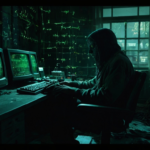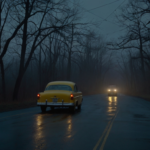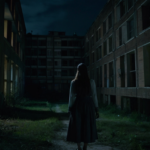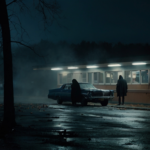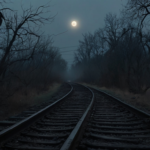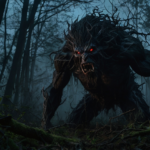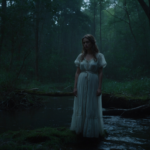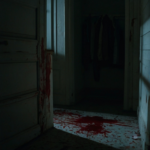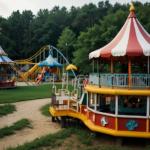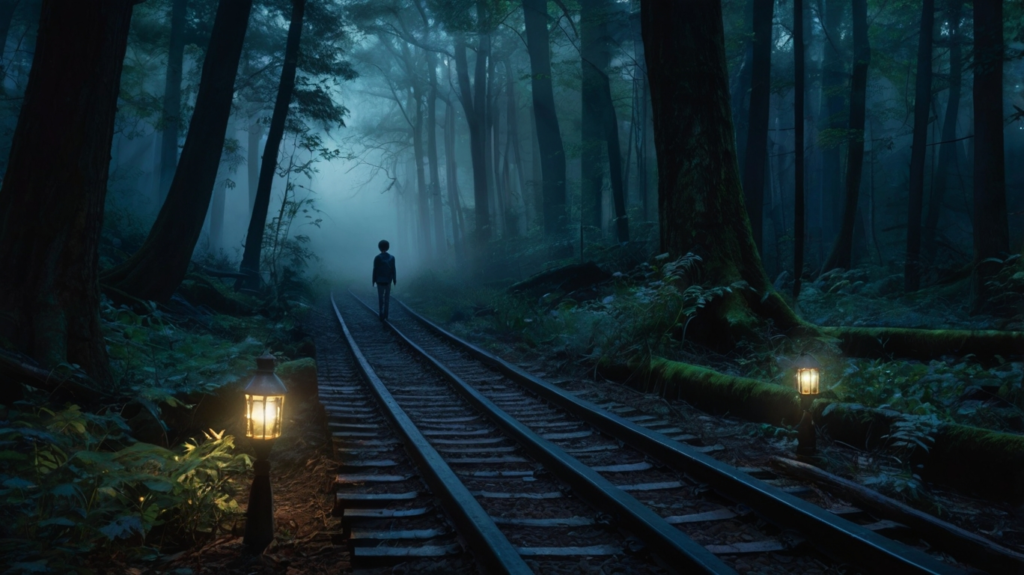
The letter from the railway department arrived on a drizzly October morning, its official seal gleaming against the pale light filtering through our kitchen window. As I held the crisp envelope in trembling hands, my wife Sarah looked up from her coffee, her hazel eyes widening with a mixture of excitement and apprehension. The assignment was clear: a two-year transfer to oversee the restoration of an abandoned railway line in Willow’s End, a remote town nestled deep within the Appalachian foothills.
The opportunity was undeniable—a significant promotion that would secure our family’s future. Yet, as I explained the details to Sarah, noting the promise of modern housing provided by the railway company and the chance for our eight-year-old son Ethan to experience small-town life, I couldn’t shake the unease creeping into my chest. The photographs accompanying the documentation showed charming Victorian homes lining cobblestone streets, but something about their perfectly preserved facades felt unsettlingly artificial, like a movie set frozen in time.
Ethan’s reaction was immediate and enthusiastic. “A new adventure!” he exclaimed, his round face lighting up as he packed his favorite action figures into his backpack right then and there. His boundless energy masked my growing concerns about uprooting him from his familiar surroundings. At school, he’d struggled to make friends, often retreating into elaborate imaginary worlds populated by characters only he could see. This move, I hoped, might help him break free from these solitary fantasies.
The relocation process moved with bureaucratic efficiency. Within three weeks, we were settling into 14 Briar Lane, a spacious colonial-style home that seemed too good to be true for the modest rental price. The house stood at the edge of town, bordered by dense woods that whispered constantly in the autumn wind. Its freshly painted white walls and manicured lawn contrasted sharply with the wild forest behind it, creating an almost surreal boundary between civilization and wilderness.
Our first few days in Willow’s End passed in a blur of introductions and orientations. The townsfolk greeted us with polite smiles and warm words, though their hospitality carried an undertone of reserve that left me unsettled. During our initial tour of the railway project site, I noticed how the workers exchanged meaningful glances when discussing certain sections of the track, particularly those bordering the woods. Their evasive answers to my questions about maintenance schedules only deepened my sense of unease.
As October waned into November, the town revealed its peculiar rhythm. Life in Willow’s End moved at an almost dreamlike pace, with residents disappearing into their homes shortly after sunset. The local children, including Ethan’s new classmates, seemed unusually quiet during school hours, their laughter muted compared to what I’d observed back in the city. These observations gnawed at my consciousness, especially during those long evenings when Sarah worked late at the community center and I found myself alone with Ethan in our too-perfect house.
The Whispers Beyond Reality
Ethan’s transformation became apparent two weeks after our arrival, coinciding precisely with the night of the first frost. It started innocuously enough—a series of whispered conversations from his room that ceased the moment I approached. When questioned, he would merely smile and say, “Just talking to my friend.” The casualness of his tone should have reassured me, yet it had the opposite effect, sending shivers down my spine each time I heard it.
The first concrete evidence of this “friend” appeared during one of my evening inspections of Ethan’s homework. Among his carefully written numbers and letters, strange symbols began appearing—delicate patterns resembling vines intertwined with geometric shapes. When confronted, Ethan claimed they were “special codes” taught to him by someone named “Asher,” who apparently visited him regularly. The name sent an involuntary chill through me, though I couldn’t explain why.
My attempts to discuss Asher directly with Ethan yielded increasingly disturbing revelations. According to my son, Asher wasn’t just any imaginary companion—he was special. He could “walk through walls” and “see things others couldn’t.” Most troubling was Ethan’s description of Asher’s appearance: tall and thin, with skin like polished marble and eyes that “glowed like embers when he smiled.” These details emerged gradually, woven into bedtime stories and casual conversation, until they formed a complete picture of a being that defied logic and reason.
The changes in Ethan extended beyond mere descriptions. He began speaking in a more formal, measured cadence, using phrases far beyond his years. His once-lively imagination took on a darker tone, filled with tales of hidden realms and ancient secrets buried beneath the town. Night after night, I listened to their whispered conversations through the thin walls, catching snippets of discussions about “the old ways” and “those who came before.” Each word seemed to carry an impossible weight, as if they weren’t merely playing pretend but engaging in serious discourse.
Sarah initially dismissed my concerns, attributing Ethan’s behavior to the natural adjustment period following our move. But even she couldn’t ignore the physical evidence that began accumulating. The delicate carvings that appeared overnight on Ethan’s bedroom window frame—perfect spirals and interlocking circles that matched the symbols in his notebooks—defied explanation. Our attempts to remove them proved futile; cleaning products had no effect, and sandpaper simply slid off the glass-like surface without leaving a mark.
The most alarming development occurred one stormy evening when I returned home early from work. As I approached Ethan’s room, I heard not just his voice but another—an impossibly smooth, melodic whisper that seemed to resonate in my very bones. The sound wasn’t human; it lacked the normal inflections and pauses of speech, flowing instead like water over stone. Pressing my ear to the door, I caught phrases that made no sense yet seemed to rearrange themselves in my mind, forming meanings that vanished as quickly as they appeared.
When I finally mustered the courage to enter, Ethan sat cross-legged on his bed, surrounded by floating objects—his toys, books, and even his pillow—all suspended mid-air in perfect formation. His eyes, usually a warm brown, had taken on an unnatural silver sheen, and his lips moved in silent communication with someone—or something—I couldn’t see. The temperature in the room dropped dramatically, causing my breath to fog in the air, yet Ethan showed no signs of discomfort.
“Asher is teaching me,” he said matter-of-factly when he noticed me standing there, frozen in the doorway. “He says there are truths we need to understand, about the forest and the tracks and…and the ones who sleep.” His voice trailed off, and for a moment, I thought I saw movement in the corner of the room—a tall, slender figure that dissolved into shadow when I turned my head.
The Forest’s Secrets
My investigation into Willow’s End’s history began with Mrs. Harper, the elderly librarian whose wrinkled hands trembled as she retrieved ancient documents from the town archives. The records spoke of a prosperous lumber town founded in 1872, but the deeper I delved, the more inconsistencies emerged. Official census reports from the late 19th century showed population numbers fluctuating wildly, with entire families disappearing from records without explanation. Newspaper clippings hinted at mysterious disappearances along the railway line, cases closed prematurely despite mounting evidence of foul play.
The breakthrough came during a chance encounter with Old Man Griggs, the retired stationmaster who spent his afternoons fishing by the river. Over shared thermoses of coffee, he recounted stories passed down through generations of railway workers—tales of midnight trains that never appeared on schedules, carrying passengers who vanished upon arrival. His weathered hands traced patterns in the air as he described “the watchers,” spectral figures said to patrol the tracks during full moons, ensuring no one trespassed where they shouldn’t.
Most chilling were the journals of Dr. Eleanor Caldwell, the town’s first physician, discovered hidden behind loose paneling in the library’s reading room. Her meticulous entries documented a series of bizarre medical cases from 1883-1885: children exhibiting sudden advanced knowledge of mathematics and languages, adults developing inexplicable abilities to manipulate objects with their minds, all centered around families living near the forest’s edge. The final entry, dated October 31st, 1885, described a mass exodus of townsfolk fleeing into the woods, led by their children who claimed to hear “the call of the ancient ones.”
Local legends corroborated these accounts, though current residents spoke of them only in hushed tones. They told of the “Sylvan Covenant,” an agreement supposedly made between early settlers and the forest spirits, granting prosperity in exchange for annual offerings. The details grew more disturbing with each telling—the chosen children, marked by silver eyes, who served as intermediaries; the ceremonial clearing where the old railway intersected with ancient ley lines; the belief that the forest itself was alive, watching and waiting.
I began noticing patterns in these stories that aligned disturbingly with Ethan’s behavior. The dates of the disappearances coincided with astronomical events, particularly lunar cycles. The affected children always exhibited similar traits: enhanced intelligence, telekinetic abilities, and an uncanny connection to the forest. Most significantly, each account mentioned a tall, ethereal figure who appeared to guide the chosen ones—a being described identically to Ethan’s Asher.
The realization struck me during a late-night research session in the library’s basement. Spread across the table lay maps of the original town layout, overlaid with Dr. Caldwell’s notes and recent satellite imagery. The pattern was unmistakable: every affected household, every reported sighting of the watchers, every disappearance—they all fell along precise geometric lines radiating outward from the ceremonial clearing. And at the heart of this web, positioned exactly where the ley lines converged, stood our house at 14 Briar Lane.
The Revelation
The confrontation unfolded on a moonless night, when the forest’s whispers seemed to press against our windows with desperate urgency. I had been observing Ethan’s interactions with Asher for weeks, documenting every detail in a worn leather notebook. That evening, as Sarah attended a late meeting at the community center, I decided to test a theory that had been growing in my mind since discovering the historical patterns. I waited until Ethan’s breathing deepened in sleep, then quietly entered his room, careful not to disturb the floating toys still suspended in their impossible positions.
Positioning myself in the exact center of the room, I began reciting passages from Dr. Caldwell’s journals, focusing on the ancient incantations she had recorded. The air thickened immediately, charged with an electric tension that raised the hairs on my arms. Ethan’s eyes snapped open, but they weren’t the warm brown I knew—they glowed silver, reflecting the same eerie luminescence I had seen in historic photographs of the chosen children.
“You’ve learned much, Thomas,” a voice resonated through the room, neither coming from Ethan nor existing solely in my ears. It vibrated through my very bones, carrying centuries of knowledge and power. “But understanding requires sacrifice.” Asher materialized slowly, stepping out from the shadows near the window. His form shimmered between solidity and transparency, his marble-like skin catching what little light filtered through the curtains. Those ember-bright eyes fixed on me with an intensity that froze my blood.
“He’s more than your son now,” Asher continued, gesturing toward Ethan. “The Sylvan Covenant demands its due. Every generation, the forest chooses its guardians, those who can bridge our world with yours. Your boy has been marked since birth, his soul resonating with the ancient energies that flow through this land.” The symbols carved into the window frame pulsed with a soft green light, matching the rhythm of Ethan’s breathing.
My mind raced through the historical accounts, connecting disparate pieces into a horrifying mosaic. The chosen children hadn’t disappeared—they had become conduits, vessels for the forest’s consciousness to interact with our world. The enhanced abilities, the formal speech patterns, the midnight visitors—it all pointed to a gradual merging of Ethan’s essence with something far older and more powerful than humanity.
“The railway you’re restoring,” Asher explained, pacing the perimeter of the room, “was originally built to contain the forest’s influence, to create boundaries between worlds. But progress weakens these barriers. Each rail replacement, each modernization brings us closer to complete integration.” He paused, tilting his head as if listening to voices only he could hear. “Your presence here isn’t coincidence. The forest chose your family specifically because of your expertise in railway infrastructure.”
Ethan sat up in bed, his movements unnaturally fluid, and spoke with a voice that blended his own childish tones with Asher’s melodic resonance. “Father, don’t you see? We’re part of something magnificent. The forest offers knowledge beyond human comprehension, powers that could reshape reality itself. All it asks is that we maintain the balance, that we allow it to grow and expand through us.”
The pieces fell into place with sickening clarity. The railway project wasn’t about restoring transportation—it was about strengthening the containment system. The townspeople’s reserved nature stemmed from generations of witnessing this cycle, knowing their children might one day be called upon. The workers’ evasive answers about certain track sections? They were aware of the precise points where the barriers were weakest, where the forest’s influence seeped through most strongly.
“Asher,” I managed to choke out, fighting to keep my voice steady, “what happens to Ethan if he fully becomes your conduit?” The figure turned to me, his expression unreadable yet somehow profoundly sad. “He transcends mortality, becoming both guardian and gatekeeper. His human consciousness will merge with the forest’s collective awareness, maintaining the balance between worlds. But the transition…” he hesitated, “…it’s irreversible. Once begun, it cannot be undone.”
Looking at my son, I saw traces of the boy I loved flickering behind those silver eyes, struggling against the ancient force that sought to claim him. The toys orbiting above his bed slowed their rotation, responding to the conflict within him. For the first time, I understood the true nature of the bargain: not just Ethan’s future, but the fundamental fabric of reality hung in the balance.
The Breaking Point
The following days blurred into a nightmare of escalating manifestations. Sarah returned from her meeting to find our kitchen furniture rearranged into intricate patterns, each piece positioned with mathematical precision that defied human capability. Pots and pans floated in mid-air, cooking meals that none of us had consciously prepared. The house itself seemed to breathe, its walls expanding and contracting with a rhythm that matched Ethan’s increasingly labored breathing.
Ethan’s transformation accelerated alarmingly. His physical body remained that of an eight-year-old boy, but his movements became unnaturally graceful, his reflexes surpassing human limits. During one particularly harrowing incident, I watched him effortlessly catch a falling glass from across the room without even looking, his hand moving faster than my eyes could follow. The silver glow in his eyes intensified, sometimes illuminating the entire room with an otherworldly light that cast no shadow.
Communication with my son became increasingly difficult. His speech alternated between childlike simplicity and complex philosophical discourses far beyond his years—or mine. He would spend hours tracing intricate patterns on every available surface, his fingers moving with such speed that they appeared as blurs. These designs matched perfectly with the ancient symbols documented in Dr. Caldwell’s journals, forming a network of glowing lines that spread throughout our home like a living circuit board.
The forest’s influence breached our walls entirely one fateful evening. As I worked late in my study, compiling notes on the town’s history, the air pressure shifted violently. Windows shattered inward simultaneously, spraying glass across the floor while leaves and branches poured through the openings like a green flood. The trees outside bent impossibly, their branches reaching through the broken panes to caress the walls, leaving trails of phosphorescent sap that glowed in the dark.
Sarah discovered the worst manifestation in Ethan’s room. The ceiling had transformed into a living canopy of roots and vines, pulsing with bioluminescent light that bathed everything in an eerie green hue. In the center of this arboreal cathedral stood Ethan, his body partially transparent, shifting between flesh and translucent crystal. Asher’s form materialized beside him, more solid than ever before, his marble-like skin now visibly textured with bark-like patterns that seemed to grow before our eyes.
“We’re running out of time,” Asher announced, his voice resonating through the transformed space. “The winter solstice approaches, and with it, the final phase of the transition. The forest grows impatient, and the barriers between worlds weaken with each passing hour.” He gestured toward Ethan, whose body began emitting a high-pitched hum that vibrated through the very foundation of the house. “His human consciousness fights the inevitable, but resistance only prolongs the agony.”
Panic gripped me as I realized the scope of the invasion. The entire house had become a nexus point, a living organism that pulsed with alien energy. Electrical devices short-circuited spontaneously, their components rearranging themselves into organic-looking structures. Water from the taps ran black with what appeared to be liquefied wood, while the air grew thick with the scent of moss and damp earth. Even Sarah’s attempts to leave proved futile—the front door refused to open, the handle melting into a mass of twisting vines whenever we approached.
The situation reached critical mass during what should have been a routine dinner. As we sat at the table, trying to maintain some semblance of normalcy, the food began transforming before our eyes. Vegetables sprouted roots that burrowed into the plates, meat turned into fibrous plant matter, and liquid solidified into crystalline structures that refracted light in impossible ways. Ethan’s fork hovered in mid-air, bending and reshaping itself into a perfect replica of the symbols that now covered every wall of our home.
“We must make a choice,” Asher declared, materializing at the head of the table. His presence seemed to anchor the chaos momentarily, giving us a brief respite from the maelstrom of supernatural activity. “The transition can be gentle or violent, but it must happen. The forest demands its guardian, and Ethan has been chosen. Resistance will only cause suffering—for all of us.”
Sarah collapsed into sobs, clutching Ethan’s rapidly changing form to her chest. His body temperature had dropped to match the coolness of Asher’s presence, his skin taking on the same marble-like quality. Yet, through all the transformations, I could still see flickers of my son’s humanity struggling to surface, his brown eyes occasionally breaking through the silver glow to meet mine with desperate pleading.
The Final Stand
The decision crystallized in my mind as I watched Ethan’s body begin to dissolve into a cascade of silver motes. I remembered Dr. Caldwell’s final journal entry, where she described how the townsfolk had fought back during the last major manifestation in 1885. Rushing to the library, I unearthed her detailed plans for disrupting the forest’s influence—plans that had been deliberately buried among mundane tax records. The solution required equal parts scientific precision and supernatural intervention, a delicate balance between modern technology and ancient ritual.
Working through the night, I gathered materials from the railway workshop: copper wiring, salt crystals, and specialized electromagnetic generators designed to stabilize old track signals. Combining these with herbs and artifacts specified in Caldwell’s notes—rue, rowan wood, and fragments of meteorite glass—I constructed a containment device that pulsed with both electrical current and mystical energy. The device’s core housed a modified version of the railway’s signal synchronization system, calibrated to emit frequencies that would disrupt the ley lines’ natural resonance.
When dawn broke, I activated the device in our backyard, positioning it precisely at the convergence point of the ley lines. The reaction was immediate and devastating. The forest responded with a fury that shook the ground beneath our feet, trees uprooting themselves and hurtling toward the house. Through the chaos, I maintained my focus, adjusting the device’s settings according to Caldwell’s calculations while reciting the protective incantations she had transcribed.
Ethan’s condition worsened dramatically as the device’s influence spread. His body began to fracture, shards of crystal separating from his form while Asher’s presence flickered like a faulty hologram. “You don’t understand what you’re destroying,” Asher warned, his voice distorted by static interference. “The forest’s growth is natural, inevitable. Your interference only delays the inevitable.”
But I pressed on, channeling every ounce of parental love and scientific knowledge into fine-tuning the device. The air crackled with energy as I initiated the final sequence, synchronizing the electromagnetic pulses with the rising sun’s position. A brilliant flash illuminated the backyard, followed by an unearthly scream that seemed to come from everywhere and nowhere. The ley lines’ energy reversed direction, flowing away from our home and back into the forest proper.
As the light faded, I found Ethan lying on the grass, his body whole and human once more. His eyes had returned to their natural brown, though they held a wisdom beyond his years. Around us, the forest stood still, its aggressive energy contained within natural boundaries. Asher’s form dissipated completely, leaving behind only a single crystal tear that sparkled in the morning sun before vanishing.
The aftermath brought both relief and profound change. While Ethan retained some of the knowledge gifted by the forest, his connection to the otherworldly realm had been severed. The town’s residents, emerging from their homes as if waking from a collective trance, acknowledged what had happened with quiet respect. The railway project continued, but with modifications that permanently reinforced the barriers between worlds.
Now, as I watch Ethan play in our backyard, I understand the true cost of our victory. The forest still watches, its presence a constant reminder of the thin veil between realities. Yet within this fragile balance lies hope—not just for our family, but for maintaining the natural order of things. Sometimes, protecting what’s precious requires facing unimaginable terrors, and finding strength in the most unexpected places.






